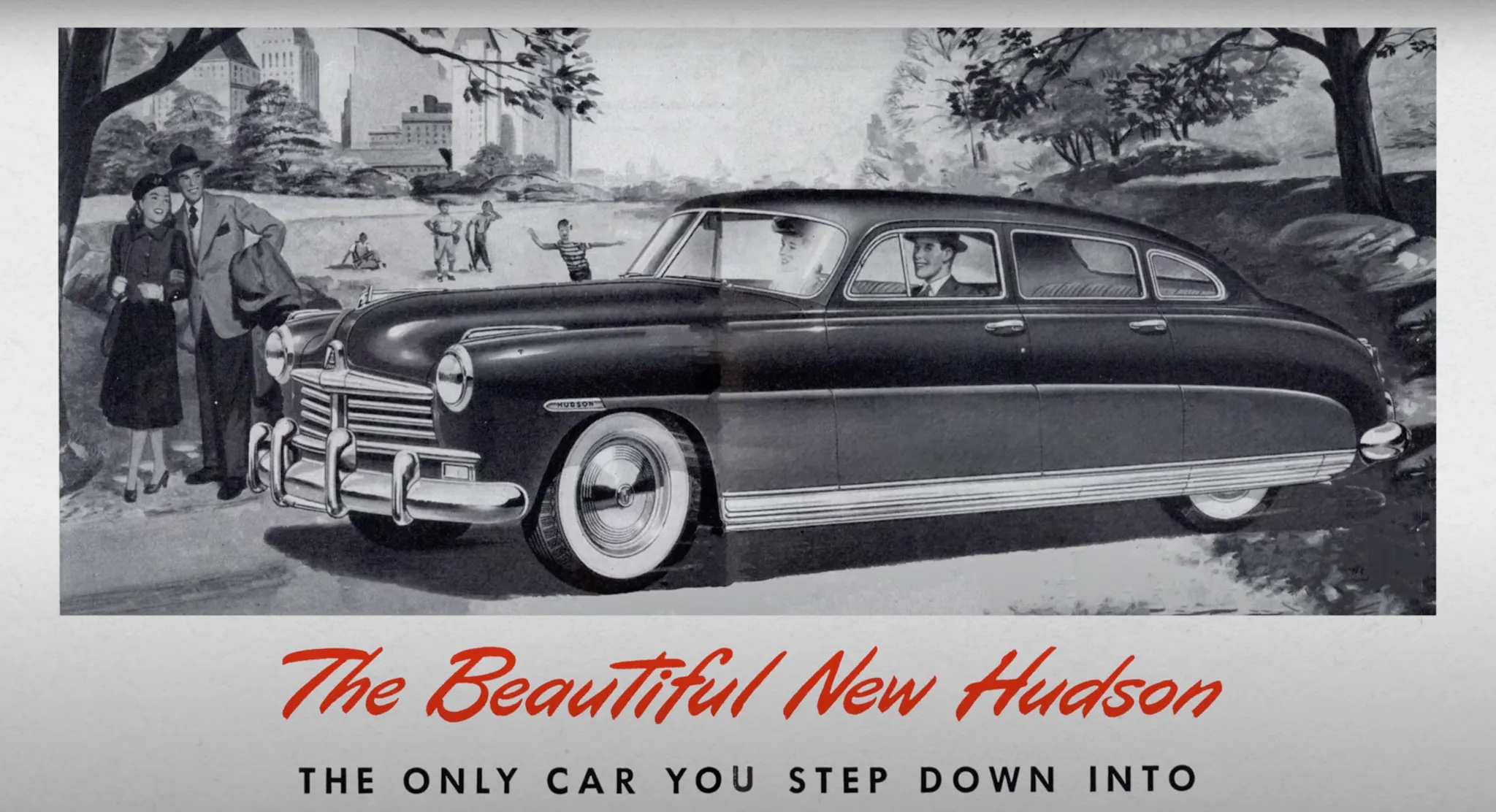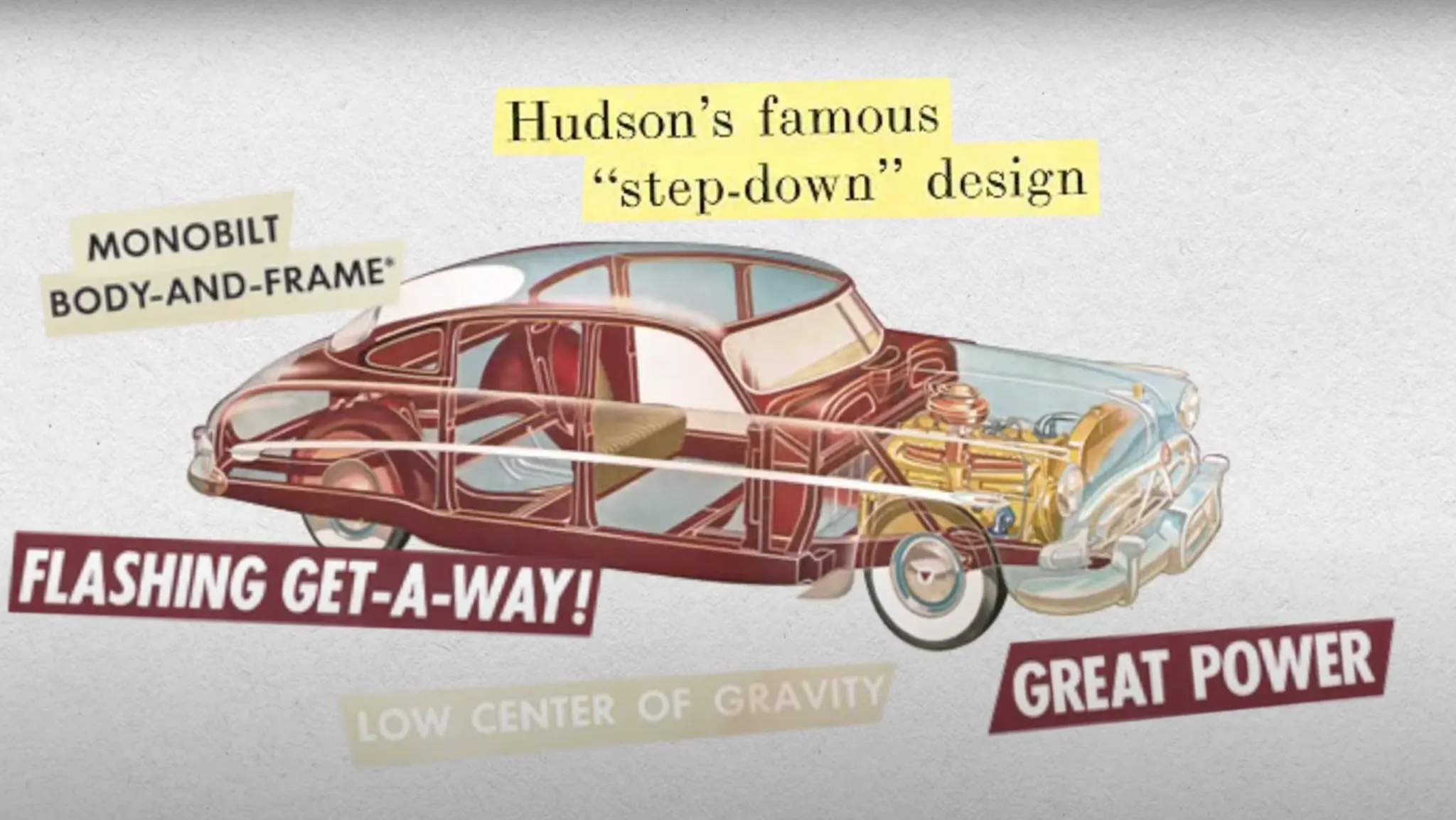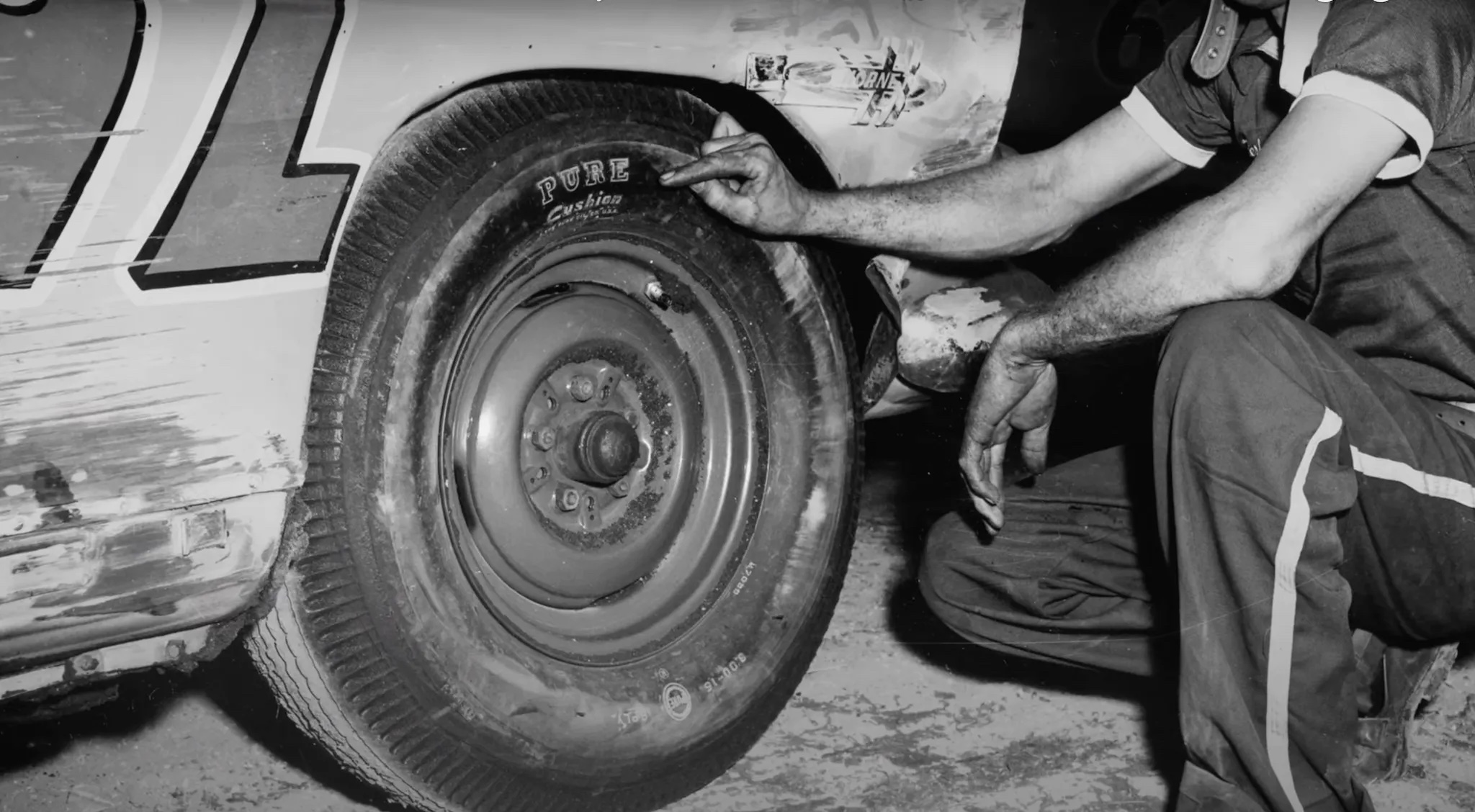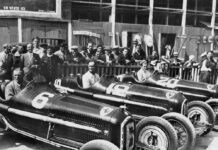If you think the replacement of bootleggers by professionals was the big tipping point in stock-car racing history, the latest documentary—embedded at the end of the article—from the Hagerty Drivers Foundation will likely teach you a few things. Today’s NASCAR would not exist if it were not for the drivers and teams who took a humble, straight-six-powered coupe racing in the 1950s. Here are five things you should know about the Hudson Hornet, the car that changed racing history.

The Hornet was never supposed to be a race car

Hudson barely survived WWII. Because its manufacturing power was lower than that of General Motors or Ford, Hudson received fewer contracts, thus entering the 1940s a step or two behind the competition. Hudson was not going to roll over, though. It pushed to create something new and attractive, a vehicle that boasted safety, performance, and comfort. The Commodore was born in 1948 and primed the buying public for the coming Hornet.
It has a uni-body design

Hudson was not even close to producing the first unibody car, but its design and construction introduced what became the calling card for Hudsons of the era: the “step down.” Since the rocker panel was a structural part of the chassis, it was much more robust than on other cars, requiring engineers to either raise the floor to the height of the sill or lower the floor beneath the sill.
The Hornet was primed to win thanks to Bill France

It was not until mid-1949 that driver and race promotor Bill France finally debuted a class called “strictly stock,” which showcased new cars that looked like those that people drove to work. France’s decision fed the idea that anyone could be a racing driver if they had “it” in them. Anyone not aspiring to race could at least cheer for a car that looked like the one in their driveway.
The chassis was good, but the engine was great

Hudson’s new-for-1951 inline-six displaced 308 cubic inches and was claimed to produce 145 horsepower. Cars in this era were just barely cracking triple-digit speeds—if at all—as pointed out by Richard Petty, who was then running a 97-hp Plymouth. As strange as it is to think of an inline-six as a competition engine, Hudson’s was the hot setup.
The wheels were the weak point

Of all the teething problems that plagued these early stock cars, wheels were one of the most troublesome. The cornering forces generated in racing were so much higher than those produced by regular street driving that the wheels would liberate themselves from their axle or bend to the point of deforming. Hudson solved the problem by reinforcing the steel wheels with what amounted to a second wheel welded onto the first. You could even order the setup on production cars as a “severe duty” option.
***
The Hudson Hornet shaped the sport that would become stock-car racing. Because of its contribution, it will be documented forever in the Library of Congress thanks to the Hagerty Drivers Foundation. Check out the other 33 cars currently on the federally recognized National Historic Vehicle Register as well; there are even more fun stories to be found.
Report by Kyle Smith for hagerty.com











